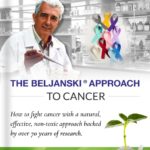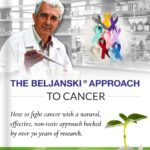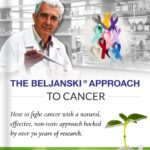Agent Orange, Beljanski & Oncotest

Agent Orange is actually the code name for one of the herbicides and defoliants used during the Vietnam War from 1961 to 1971, manufactured for the U.S. Department of Defense primarily by Monsanto Corporation and Dow Chemical. Contaminated with an extremely toxic dioxin compound, it was given its name from the color of the orange-striped 55 US gallon (208 l) barrels in which it was shipped. According to Wikipedia, during the Vietnam War, between 1962 and 1971, the United States military sprayed nearly 20,000,000 US gallons (80,000,000 l) of material containing chemical herbicides and defoliants mixed with jet fuel in Vietnam, eastern Laos and parts of Cambodia, as part of Operation Ranch Hand.(1)
In the eyes of many, the $43-million joint cleanup effort is too little, too late. The problem is one of liability. But when environmental factors are linked to disease, proof positive is sometimes hard to determine. While some American military studies have outlined connections between Agent Orange and myriad ailments, Dow Chemical maintains that the “very substantial body of human evidence on Agent Orange establishes that veterans’ illnesses are not caused by Agent Orange.” reports the NY times. And while VA and other Federal Government Departments and agencies have and continue to conduct extensive research evaluating the health effects of Agent Orange exposure on U.S. Veterans, little progress is being made towards indemnification of victims.
One of the possible reason for the lack of definitive scientific results is due to the fact that the mainstream Ames test used to classify cancer causing compounds ( Ames B, Lee F, Durston W. An improved bacterial test system for the detection and classification of mutagens and carcinogens. Proc Natl Acad Sci. 1973;70:782-786. ), is based on the belief that cancer formation is induced solely by mutation which transforms normal DNA into tumor DNA.
But there are too many exceptions to this mutagenetic theory and thanks to his own test, the Oncotest, Mirko Beljanski, PhD. was able to identify a class of compounds that were carcinogenic without exhibiting the mutagenic potential used by the Ames test to classify cancer causing compounds.
Dr Michael Schachter explains the motivation and mechanism behind the Oncotest very well:
“When Dr. Beljnski began his career as a molecular biologist in the early 50s at the Pasteur Institute in France, he was convinced that the recent discovery of the structure of DNA would open up major therapeutic possibilities that previously had not been imagined….
One of Dr. Beljanski’s key discoveries was that the secondary structure of DNA in cancer cells differed from normal DNA in that it contained some permanently open loops, as a result of carcinogenic substances interfering with the hydrogen bonding between the two strands of the double helix. These permanently separated sections allowed more carcinogenic substances to come between the two strands of the double helix and lead the DNA to uncontrollable replication and further deregulation of the cancer cell, resulting in rapid and uncontrollable growth of cancer cells. He referred to the cancerous DNA as destabilized DNA, since the hydrogen bonds did not hold the two strands together in a stable manner.
So, when cancerous DNA was exposed to carcinogenic substances, it replicated rapidly, while non-cancerous DNA replicated only slightly. This could be shown experimentally by adding substances to cancerous DNA or normal DNA and measuring either the increase in growth of the DNA or light absorption of the materials, as the more unstable the DNA, the more light that it would absorb (hyperchromicity). Once carcinogens had destabilized normal DNA to the point that it became permanently destabilized (had become cancerous DNA), further exposure to carcinogens would increase the destabilization, making the cancerous DNA unstable. In other words, cancers cells could become more aggressive and bizarre as they were exposed to more carcinogens.”
These observations resulted in Beljanski developing a test to screen substances for carcinogenicity, which he patented in the 70’s as the “Oncotest”. Carcinogens resulted in the rapid replication of cancerous DNA, but affected normal DNA only slightly. Most importantly, the Oncotest revealed that a compound could show carcinogenic properties (by affecting DNA structure) without necessarily being a mutagen, which acts by altering DNA and protein sequences. The Oncotest was ultimately used to test hundreds of compounds for their effect on DNA stability and their potential to act as carcinogens.
Relatively low tech and inexpensive to perform, the Oncotest methodology was first patented by Mirko Beljanski and then included in his 1983 work «Regulation of DNA Replication and Transcription » published by Karger.
While the Karger edition is currently out of print, few reprints are still available through the Beljanski Foundation website, and the work will soon be republished by Demos Medical Publishing as the first of a series of classic monographs both in a printed and e-book format.

To learn more about them please visit: http://www.demosmedpub.com.
(1) http://en.wikipedia.org/wiki/Operation_Ranch_Hand

